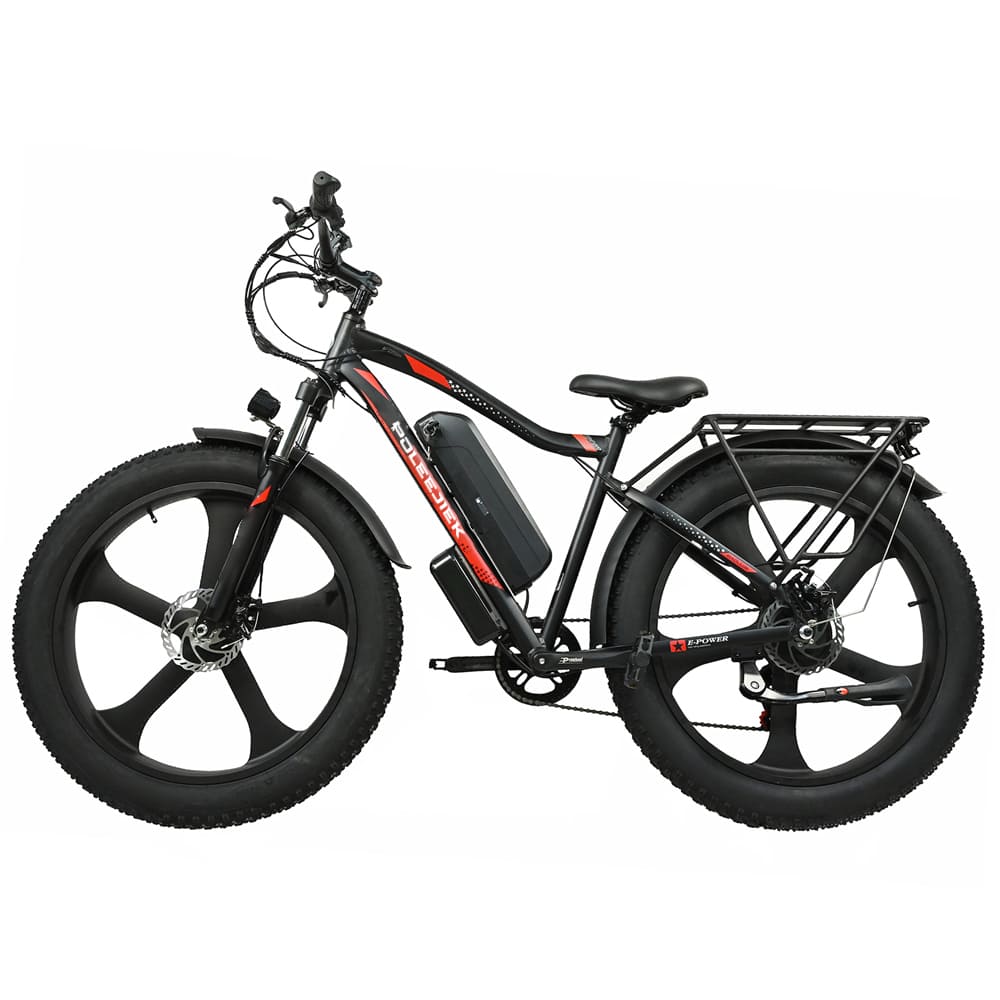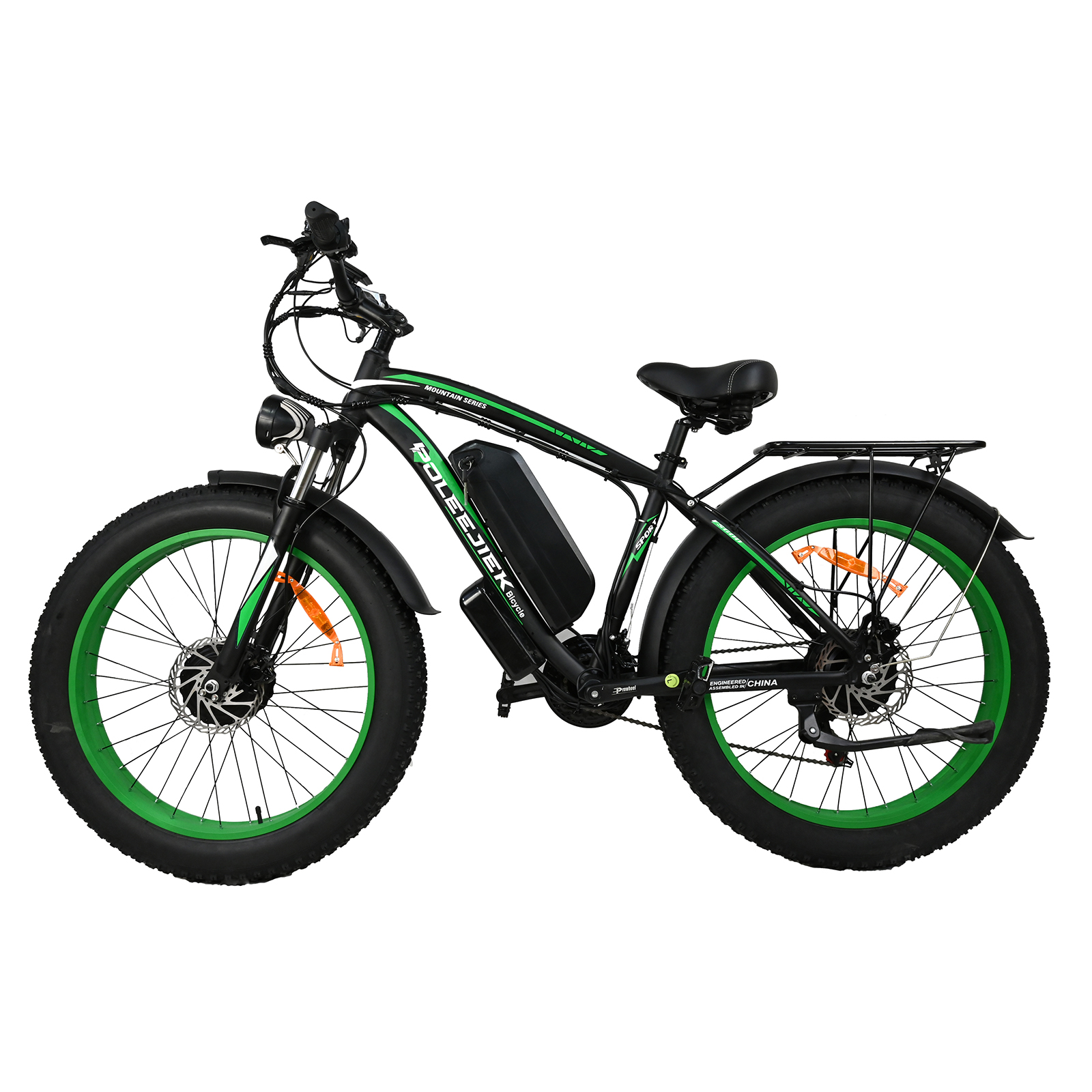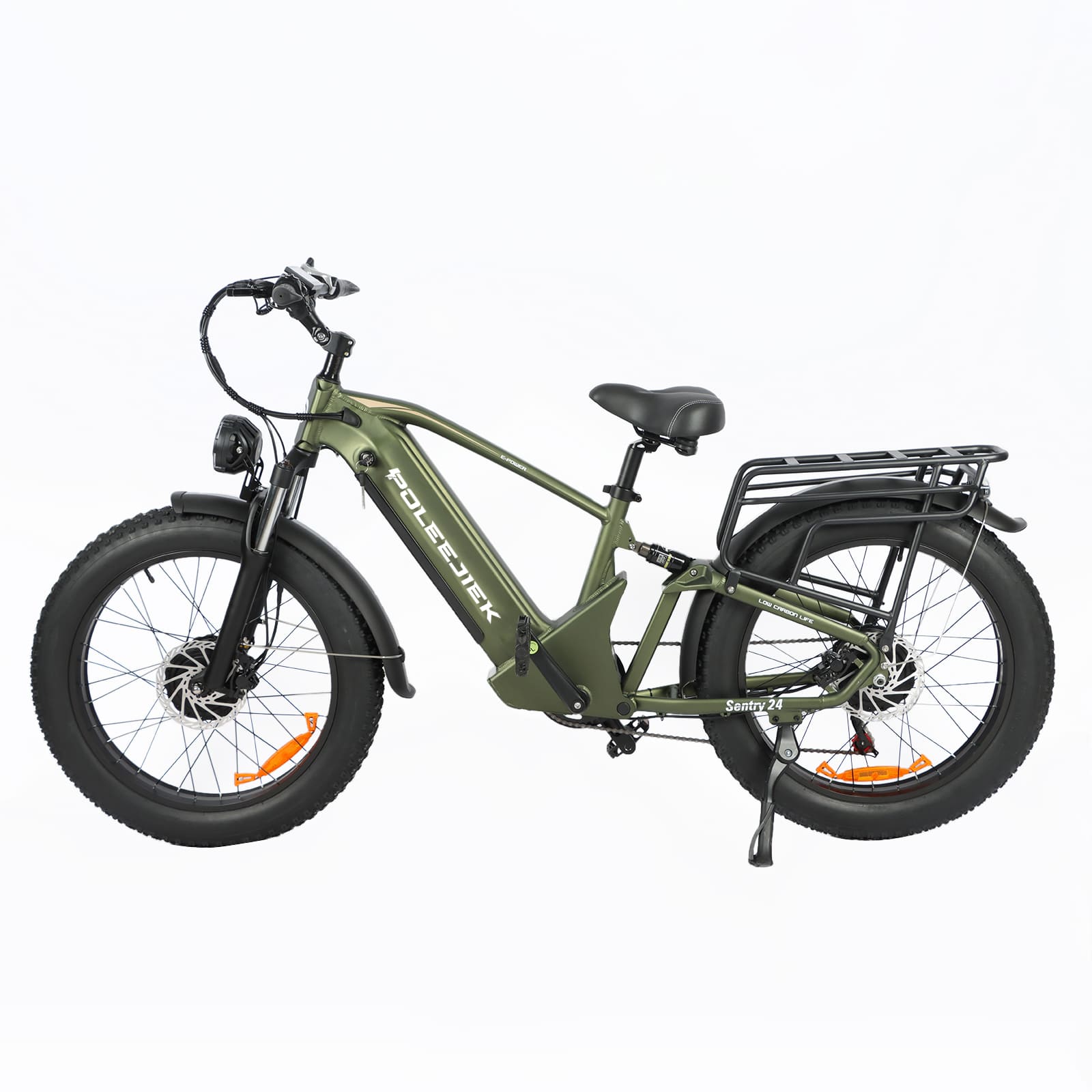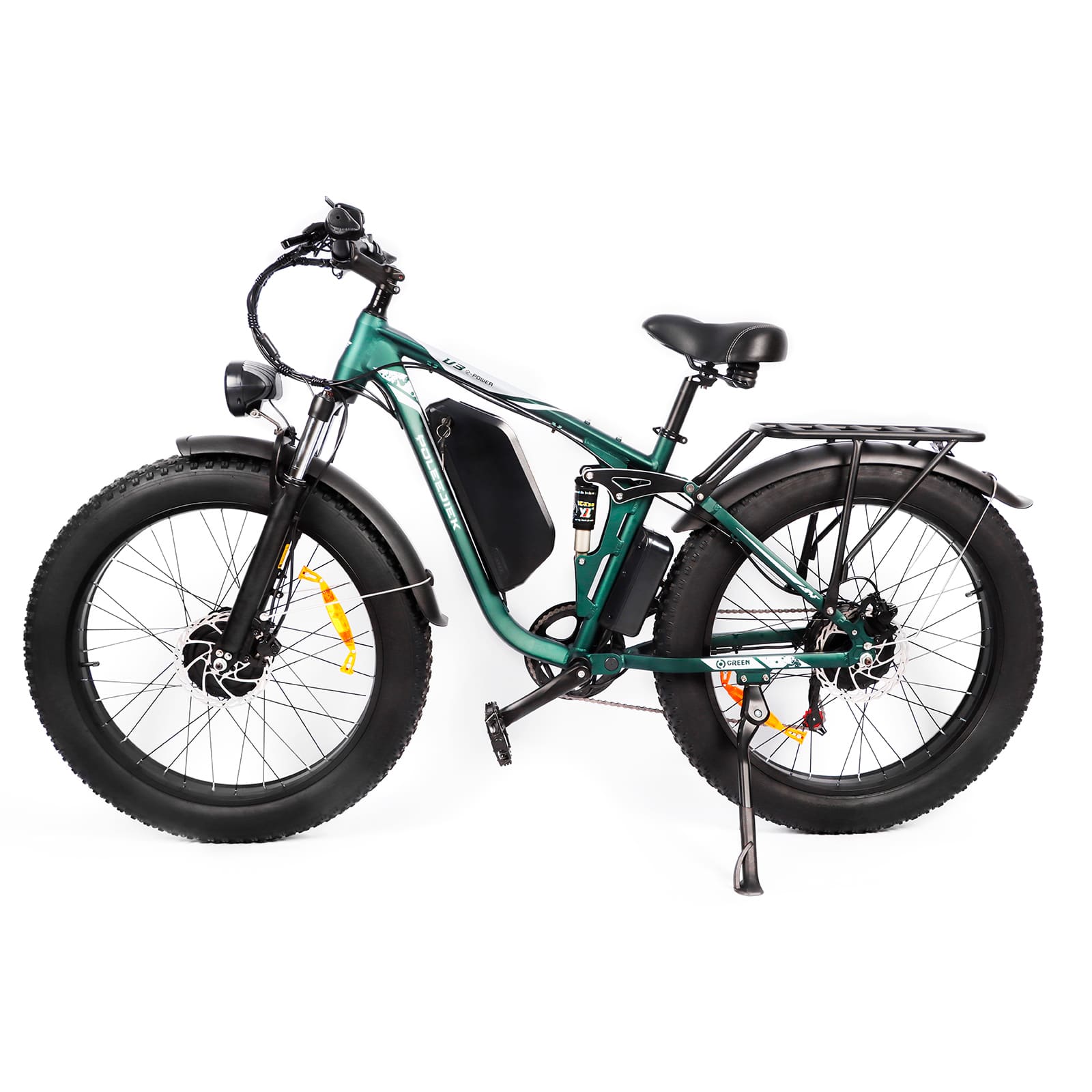Why 30 mph Ebikes Aren't Street Legal in 2025
Disclaimer: This content is for B2B informational purposes and is based on regulations researched in November 2025. Laws change frequently. This is not legal advice. Always consult local legal and customs experts before making a bulk purchase.
Last Updated: November 11, 2025
As the demand for high-speed electric bikes grows, many B2B buyers and fleet operators ask a critical YMYL question: Are 30 mph ebikes street legal? In 2025, understanding speed regulations and street legality is critical for sourcing and selling electric bikes in different markets. This guide breaks down the authoritative rules, market trends, and POLEEJIEK’s high-power OEM compliance options for B2B buyers.
What Is a 30 mph (48 km/h) Ebike?
A "30 mph ebike" typically refers to an electric bicycle capable of reaching ~48 km/h with motor assist. These models often feature:
-
High-power motors (1000W–3000W+)
-
Fat tires for stability at higher speeds
-
Advanced battery capacity (20Ah–30Ah+)
-
Suspension forks and hydraulic brakes for control
They're popular with adventure riders, off-road enthusiasts, and rental fleets wanting premium options.
The Core Question: Are 30 mph Ebikes Street Legal in 2025?
The short answer is: No. In most major markets (like the US, EU, UK, and Australia), a 30 mph (48 km/h) ebike is NOT treated as a bicycle on public roads. It is legally classified as a moped or motorcycle.
This is critical for B2B buyers. It means importing and selling these units requires compliance with entirely different regulations, including licensing, insurance, registration, and mandatory helmets.
The Authoritative Answer: Key Market Regulations Compared
This table, based on government and regulatory sources (like the US CPSC, GOV.UK, and Australian state transport sites), compares the legal status of "compliant ebikes" versus "30 mph over-spec bikes."
|
Regulation Area |
US (Class 3) |
US (30 mph / Over-Spec) |
UK (EAPC) |
Australia (Pedelec) |
|---|---|---|---|---|
|
Motor Power Limit |
≤ 750W |
Often > 750W (e.g., 1000W+) |
≤ 250W (continuous rated) |
≤ 250W (or 500W in NSW) |
|
Motor Assist Limit |
28 mph (pedal-assist) |
30 mph (or higher) |
15.5 mph (25 km/h) |
25 km/h (pedal-assist) |
|
Throttle |
Not permitted |
Often equipped |
Not permitted (except walk assist) |
Allowed only up to 6 km/h |
|
Legal Classification |
E-Bike |
Moped / Motorcycle |
Electrically Assisted Pedal Cycle (EAPC) |
Bicycle |
|
Compliance Needs |
Min. age 16, helmet mandatory |
License, Registration, Insurance |
Min. age 14 |
Helmet mandatory |
US Regulations: Federal vs. State
US laws are complex. At the federal level, the Consumer Product Safety Commission (CPSC) defines a "low-speed electric bicycle" as having a motor under 750W and a top speed of 20 mph when using throttle-only.
However, states use a "3-Class System" to manage road access:
-
Class 1: Pedal-assist only, up to 20 mph.
-
Class 2: Throttle-assist, up to 20 mph.
-
Class 3: Pedal-assist only, up to 28 mph (often min. age 16, helmet mandatory).
The Key Takeaway: Your 30 mph ebike does **not** fit into any of these classes. It exceeds the 28 mph limit for Class 3. Therefore, nearly all states will classify it as a "moped" or "motorcycle," subjecting it to motor vehicle laws.
EU & UK Regulations: The Strict EAPC Standard
UK regulations (based on EU EN15194) are very clear. To be a legal "Electrically Assisted Pedal Cycle" (EAPC), a bike must meet *all* of these conditions:
-
Motor must have a continuous rated power of **no more than 250W**.
-
Motor assist must cut off at **15.5 mph (25 km/h)**.
-
It must have working pedals.
-
Rider must be at least 14 years old.
The Key Takeaway: Any bike outside these rules (like a 30 mph, 1000W model) is legally a motor vehicle (moped). The rider must have a license, insurance, registration, and wear a motorcycle helmet.
Australian Regulations: State-by-State
Australia is similar to the UK but with state-level variations.
-
Common Standard (Pedelec): Most states (like Victoria, South Australia) follow the 250W power and 25 km/h assist limit standard.
-
Throttle Rules: Throttles (without pedaling) are generally only allowed for a 6 km/h "walk mode".
-
New South Wales (NSW) Exception: NSW allows motors up to 500W, but the maximum assisted speed is **still 25 km/h**.
The Key Takeaway: A speed of 30 mph (approx. 48 km/h) is far over the 25 km/h limit. It cannot be used as a bicycle anywhere in Australia and must be registered as a motor vehicle.
B2B Compliance Workflow: From OEM to Market (Empirical Evidence)
As a B2B buyer, your compliance is your business. Here is a practical workflow based on POLEEJIEK's experience, using the UK market as an example:
-
Step 1: Market & Rule Identification The B2B client (you) identifies the target market as the UK. POLEEJIEK experts (us) immediately flag that this market is split between legal EAPCs and highly-regulated "mopeds".
-
Step 2: Product Classification & Risk You want to import the 30 mph (1000W) model. We confirm this is **not** an EAPC in the UK, but a legal moped. This means your end-customer needs a license, insurance, and registration.
-
Step 3: POLEEJIEK OEM Compliance Customization We offer two OEM solutions for your market:
- Option A (EAPC Compliant): We provide a similar-looking model but use OEM settings to lock the motor to 250W and the assist speed to 15.5 mph (25 km/h), making it fully EAPC-compliant.
- Option B (Moped): We produce the 30 mph model, but build it to "moped" standards (e.g., may require different lights, horn, VIN) and provide the correct manufacturing documentation.
-
Step 4: Documentation & Labeling (Trust) This is the most critical step.
- For Option A (EAPC), we affix a compliant plate to the frame, clearly stating the manufacturer, motor power (250W), and max assist speed (15.5 mph) as required by UK EAPC labeling rules.
- For Option B, we provide a Certificate of Conformity for you to register it as a motor vehicle in the UK.
B2B Tip: The market for "Option A" (compliant EAPCs) is vastly larger than for "Option B" (mopeds). Using OEM customization to ensure compliance is the key to minimizing risk and maximizing your audience.
POLEEJIEK’s High-Power OEM Options
We specialize in supplying high-power (and compliance-customizable) ebikes for B2B buyers worldwide:
Electric Motor Bike BLJ-Motorcycle

Motorcycle-inspired frame with 1000W brushless motor. A stylish, high-power option for rental fleets and adventure tours (can be speed-limited for compliance). View BLJ-Motorcycle →
Fat Tire Mountain eBike
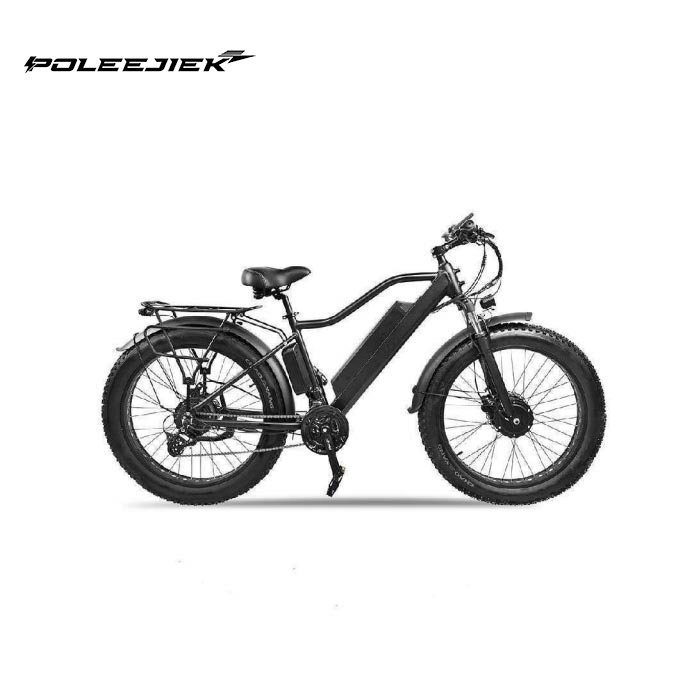
Powerful 1000W motor, 26×4.0” fat tires for off-road adventure. Perfect for tourism rentals and rugged trails (can be customized for local regulations). View Fat Tire Mountain eBike →
Why Choose POLEEJIEK as Your OEM Supplier
POLEEJIEK helps B2B buyers navigate speed rules with:
-
Adjustable speed limiters for regional compliance (e.g., EAPC 250W / 15.5 mph)
-
Motors from 500W to 3000W+ for "off-road use" or "moped" classifications
-
OEM/ODM branding and packaging
-
Custom documentation and compliance labeling for local regulations (e.g., EAPC plates)
-
Flexible MOQ and professional after-sales support
We help you stay compliant while offering exciting, high-speed models your customers love.
FAQ
Are 30 mph ebikes street legal in the US?
No (as bicycles). Most states cap Class 3 ebike assist at 28 mph. Any bike over 28 mph or 750W (like a 30 mph model) is typically treated as a moped or motorcycle, requiring a license, insurance, and registration.
Are 30 mph ebikes legal in the EU / UK?
No (as bicycles). The EU (EN 15194) and UK (EAPC) standards limit legal ebikes to 250W and 25 km/h (15.5 mph). A 30 mph (48 km/h) bike is far over this limit and is legally classified as a moped, requiring registration and insurance.
Ready to stock high-power (and compliant) 30 mph ebikes for 2025? Contact POLEEJIEK today for an OEM quote. Offer your customers power, style, and reliable compliance with POLEEJIEK electric bikes.



